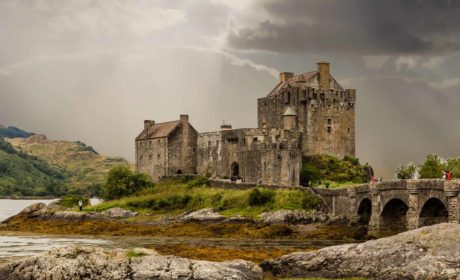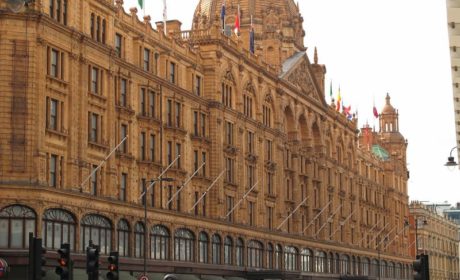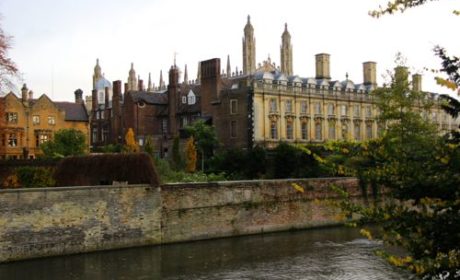Have you dreamed about a Wales road trip? The UK offers an endless array of travel opportunities for any type of traveler, including boomer roadtrippers
Obviously, popular cities like London, Cambridge, Edinburgh, and Glasgow get a lot of tourism, and deservedly so. However, if you’re into traveling through rolling green landscape dotted with historic castles and picturesque towns, a Wales vacation is the trip to take.
My Itchy Travel Feat featured contributor, Debi Lander from ByLanderSea, takes us to Wales on a scenic drive to the country’s best landmarks. Have you seen her wonderful English adventure to Northumberland?
Table of Contents
Tips for a Wales road trip itinerary

American tourists often overlook Wales, a country about the size of Massachusetts—independent, but a member of the United Kingdom along with Scotland, England, and Northern Ireland. Cardiff, the capital of Wales, lies about three hours from London. It’s easy to reach if you fly into Heathrow and rent a car or take a bus from the airport.
A thousand years ago Wales ruled with might, and 600 castles remain from former kings and nobles. Wales yields more castles per square mile than any other country in the world. Some sit as ruins and others enchant with dream-like turrets, fabulous art and antique furnishings.
My fascination with castles called me to Wales along with its spectacular scenery: lush, green mountain ranges and rolling farmland dotted with wooly sheep. Sheep number nine million while the total population amounts to just three million, therefore it’s easy to envision the landscape.
Start in Cardiff
My tour of Wales began in cosmopolitan Cardiff with lodging in a downtown hotel. This location strategically placed me within walking distance of all the tourist sites.
I stayed in the deluxe Cardiff Marriott Hotel with oversized rooms and comfy beds, plus a scrumptious breakfast buffet.
As a university city, Cardiff buzzes with a variety of trendy restaurants, pubs selling craft beer and busy nightlife. On game days. the city center bursts with excitement as up to 74,500 international rugby fans make their way to Principality Stadium.
Touring Cardiff Castle

You’ll find Cardiff Castle and its distinctive clock tower the main attraction in center city. The exterior of the downtown complex doesn’t hint at the astonishing buildings within.
Get ready for reconstructed ruins from an almost 2,000 years old Roman fort, a Norman castle, and an elaborate Victorian Gothic palace, all enclosed by a wall. Visitors can step inside the twelve-sided medieval “keep,” dating back to 1081, and survey the scene like a sentry on lookout, or climb to the top and declare themselves king!

During the 1400’s a residential block was added to the fortress and the 1580’s brought splendid furniture and tapestries. In 1766, the Bute family inherited the castle.
Bute made his fortune from coal (black gold) and he and the renowned architect, William Burges, began major renovations. They hired skilled artisans to create exquisitely painted walls with detailed carpentry.
Both were enthralled with the medieval period, and money was showered into the project. The results reach beyond expectations and surprise all who enter.
The lavish 19th-century rooms burst with romantic fantasy, legends and lore. Take a guided tour and undercover hidden doorways and other secrets. If you’ve seen Mad King Ludwig’s Neuschwanstein Castle in Bavaria, there is a resemblance. I was totally enamored.

The Banqueting Hall begs for a feast. Here, impressive murals tell the castle’s history similar to illuminations in a medieval manuscript.
The space occasionally doubles as a reception room for State visits and weddings. The Library makes you wish you could settle in for a good read.
Bute donated the castle to the government with the stipulation that the surrounding land be kept green. And that’s why the center city property rests within a spectacular garden.
You can leave the walled grounds, stop for the local specialty, Welsh cakes, in the gatehouse tearoom, then walk into the park and hop aboard a water taxi to Cardiff Bay. This old but renovated port grew around the latest entertainment venue, the bronze-domed Millennium Center.
Roadtrippinng Wales: beyond Cardiff
I rented a car for the remainder of my trip and began with a 45-minute drive to Chepstow.
Chepstow Castle

Chepstow Castle, a Norman ruin, is Britain’s oldest stone-built fortress, constructed in 1067, right after the Battle of Hastings.
The scenic but roofless ruins hover on the edge of a cliff on the River Wye. I followed the self-tour and took many photos, then spent the night in the postcard-pretty town.
Tintern Abbey

Next morning, I ventured to nearby Tintern Abbey, an evocative shell of a former monks abbey. Such is its charm that William Wordsworth penned a famous poem about the ruins lying in the forested Wye Valley.
The immense sanctuary is haunting. If you close your eyes you might hear chants from the fabled monks echo through the masonry.
Laugharne Castle

Driving on, I headed across Wales to the southwestern side pausing at Laugharne Castle, pronounced Larne. Here, I climbed within the earthwork fortress that was converted into a mansion in 1575. The reward was a 360-degree panoramic view of patchwork quilt fields and an estuary of the River Taf.
Pembrokershire Coast National Park
I continued on toward Tenby but stayed in a wee town called Saundersfoot. Both lead to the Pembrokeshire Coast National Park renowned for its beaches. Yes, Wales has shoreline and surf, but the thought of experiencing it was too chilling for this Floridian, even in August.
Pembroke Castle

Next day I explored the mighty Pembroke Castle where Welsh history took on new meaning thanks to a charismatic guide. I’d encourage tourists to join the free, guided history walk.
Norman invaders built big and bold Pembroke, and its defensive fortifications proved too strong for any enemy attack. One set of towers contains the birthplace of Henry VII of the Tudor line.
Today, Pembroke Castle shines as an outstanding example of a family or extended family attraction. Numerous programs on an enormous outdoor carpet offer a knight’s school for children, archery (with soft arrows), court jester class and needlework. It’s fun to see grandparents totally delighted with the antics of their equally entertained grandchildren.
Boomer Travel Tip
MedjetAssist Members who are hospitalized 150 miles from home receive medical transport to a home-country hospital of choice. Memberships from $99.
Wales roadtripping to St. David’s

Remote St. David’s required another day trip through twisty-turny roads. This must-see destination presents the largest Cathedral in Wales.
Visitors follow the footsteps of ancient Celtic pilgrims to the sanctuary founded by Wales’s patron saint in 1181. The interior showcases an intricate carved wooden ceiling and nave and a number of stone chapels.

Meander next door to investigate what remains of the medieval Bishop’s Palace. Again, it’s easy to imagine strains of merriment in the former Great Hall.
Don’t leave St David’s without partaking one of the outdoor adventures to offshore islands. A one-hour rafting trip around Ramsay Island brought me face to face with seals lazing in the sun, nesting birds (puffins are often spotted), brief excursions inside caves and an adventurous bumpy ride over tidal rapids. Thankfully, the outfitters provided a parka.
Visiting Northern Wales
After three nights in Saundersfoot, I drove north through poetic sounding Snowdonia National Park (elevation 3,650 feet) with sheer rock faces and glacial valleys. Sadly, on the day I crossed Snowdonia, fog set in and I barely saw the mountains.
I’d hoped to take the small train from Llanberis to the top of Snowden’s peak. Legend says the giant ogre Rhita, vanquished by King Arthur, is buried there.
In Northern Wales, many residents speak Welsh as well as English. Trust me, it’s impossible to sound out the words, but your attempts will make for some tongue-twisting humor.
Just try this one—a village with the second longest place name in the world: Llanfairpwllgwyngyllgogerychwyrndrobwillantysilliogogogoch.
Stopping in Llandudno

I eventually arrived in the popular Victorian seaside resort town of Llandudno, another name that proved difficult to pronounce. Llandudno pays homage to Lewis Carroll’s Alice, the real girl who lived there and inspired Alice in Wonderland.
Tourists can follow the Alice in Wonderland trail throughout the town searching for statues like the Mad Hatter, the Queen of Hearts and Tweedledee and Tweedledum. They also stroll the longest pier in Wales (2,295 feet), passing Victorian mansions embellished with gingerbread details.
Time permitting, hop a cable car to travel up the bluff for views of the harbor and wind turbines planted in the sea.
Explore legendary castles in Northern Wales
However, I’d traveled to Northern Wales to dwell in the legendary castles that rank as serious rock stars. You’ll need to extend your Wales road trip itinerary at least three days to tour them properly.
Conwy
In Conwy, walk around ancient and well-preserved town walls. They wrap themselves around narrow streets and lead to the multi-turreted castle.
Like a fairytale illustration come to life, eight massive towers and a high curtain wall loom large. The bucolic hillside setting and tidal waterfront include a Tudor-style mansion with costumed interpreters and the quirky Smallest House in Britain, measuring 9x 6 feet, and once owned by a six-foot tall fisherman.
Caernarfon Castle

You’ll need another day to explore the tough and rugged Caernarfon Castle and its harbor. Caernarfon is the ceremonial investiture site of the Prince of Wales.
The castle was built as a royal palace as well as a military fortress by King Edward I. Climb the mighty towers for royal worthy views, visit the military museums and learn about the first Prince of Wales at this World Heritage site. One room, devoted to the investiture, shows a video of Prince Charles’ 1969 ceremony.
Bodnant Garden

Many of the castles also include glorious gardens as bumper crops of flowers flourish in the often-drizzly climate of Wales. Bodnant Garden, not too far from Conwy, is one site that stands on its own.
Stroll trails around a majestic manor home and colorful rose garden, pass small ponds, wildlife, and a giant redwood forest. Allow time for a cup of tea in the Heritage site tearoom.
Bodnant is particularly famous for its breeding program of rhododendrons and azaleas, as well as for collections of camellia, hydrangea, clematis and magnolia.
The castles and countryside of Wales did not disappoint me. With such wonders and friendly English-speaking citizens, why not consider a Wales vacation in your future road trip plans?



